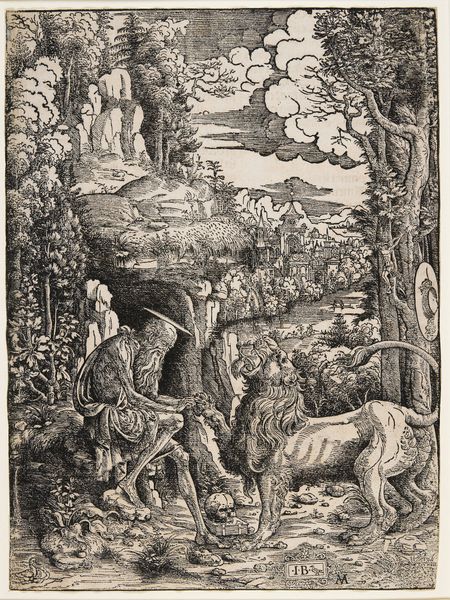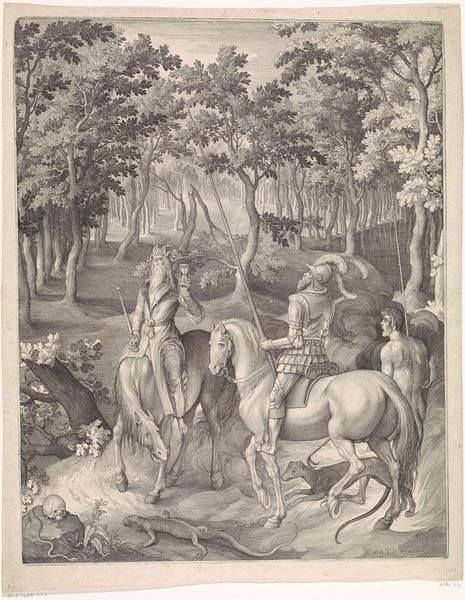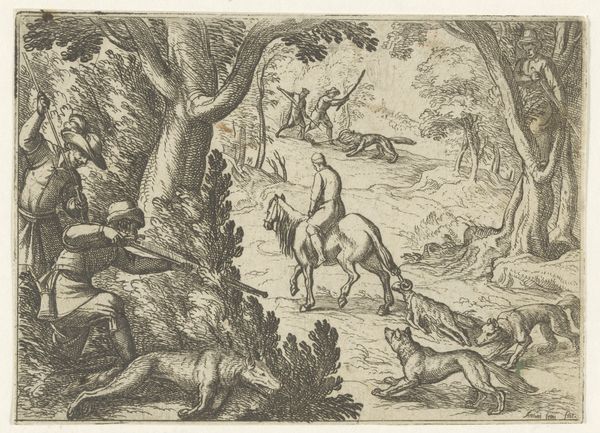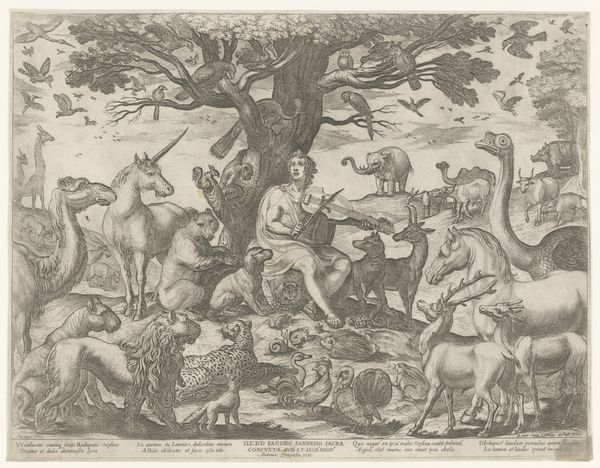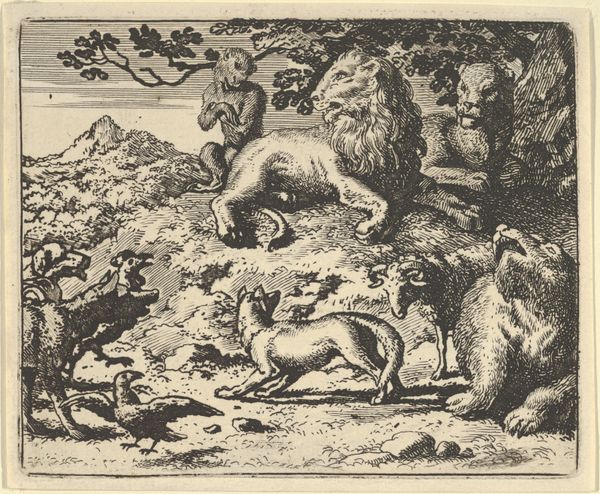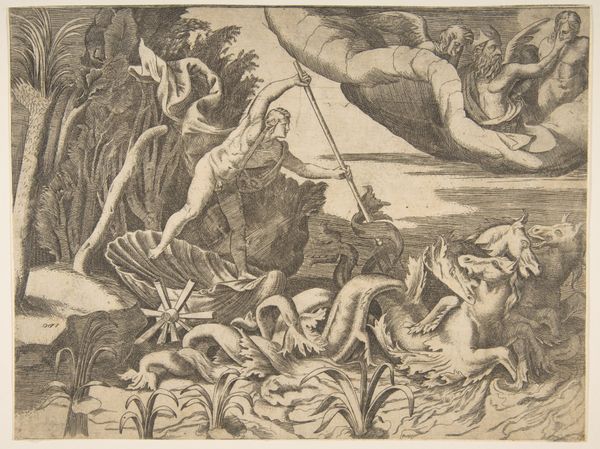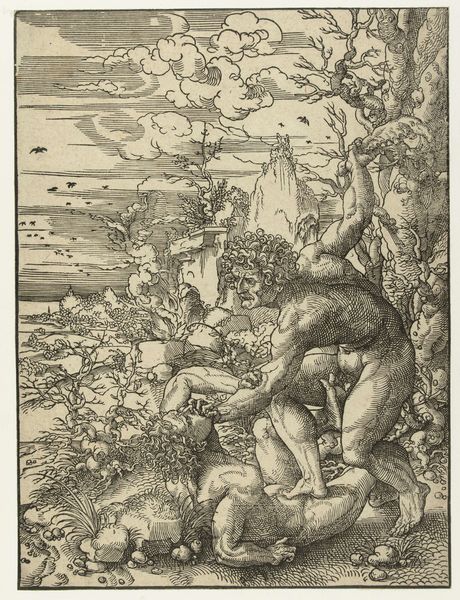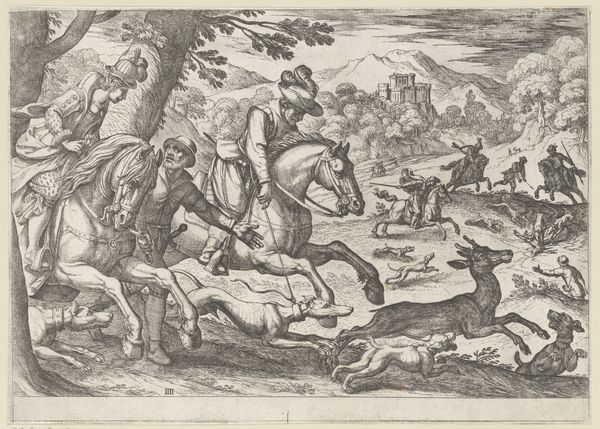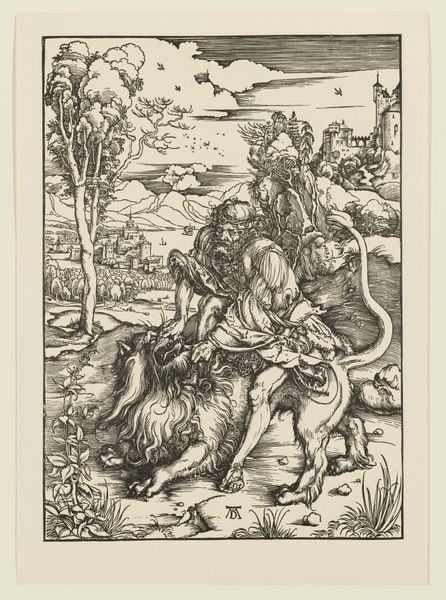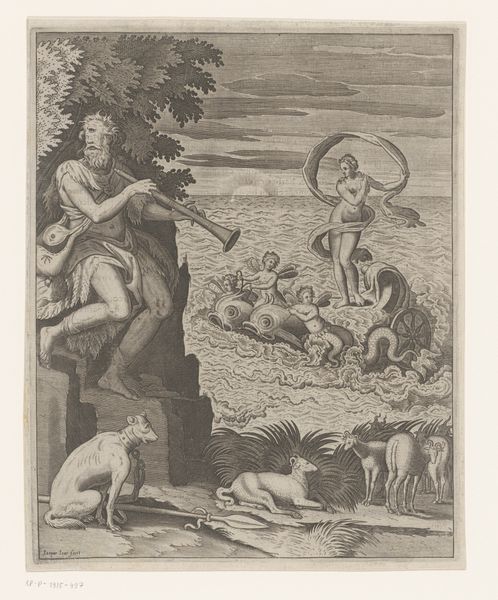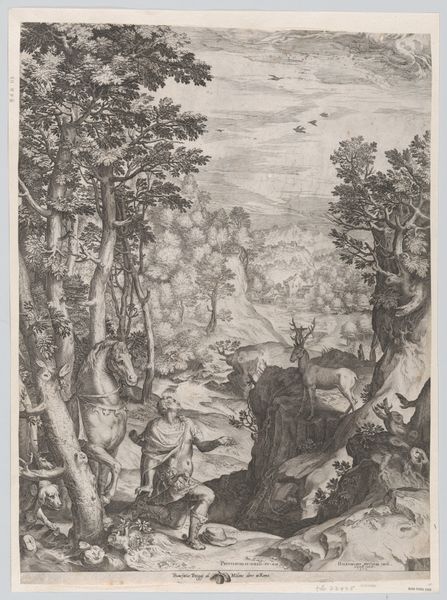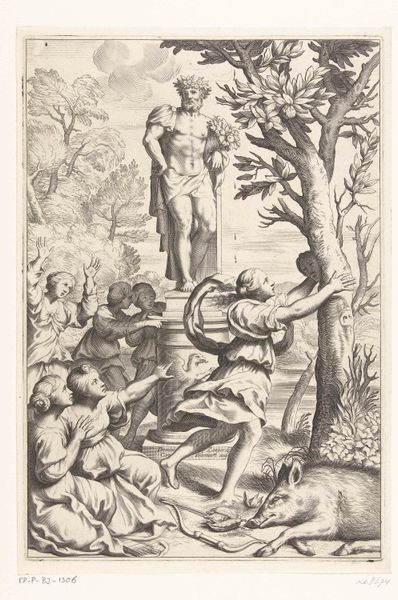
Dimensions: width 178 mm, height 227 mm
Copyright: Rijks Museum: Open Domain
Editor: This is "Heilige Hubertus," or Saint Hubert, an engraving by Julius Goltzius, created after 1560. I find it striking how detailed the landscape is, and the textures created by the engraving seem to give the scene a luminous, ethereal quality. What stands out to you about this image? Curator: Immediately, the stag’s antlers catch my eye – or rather, the crucifix held between them. This potent symbol connects us directly to the legend of Saint Hubert, a nobleman converted to Christianity after receiving a vision of this very image during a hunt. Think of the symbolic weight here – the raw, primal act of the hunt juxtaposed with the symbol of divine grace and sacrifice. Editor: So the stag isn't just a stag; it’s a messenger. Curator: Precisely. The image operates on multiple layers. Consider also the hunting dogs surrounding Hubert, looking up in anticipation and awe. Dogs have long served as symbols of loyalty, vigilance, and the animal side of human nature. Goltzius creates a very powerful dialogue between those competing drives of mind and heart. Editor: That makes sense. They mirror Hubert’s own transition, maybe? Curator: A good way to interpret. What does the landscape contribute to this story, in your opinion? Editor: I initially saw the landscape as just decorative, but perhaps the shift from a darker forest in the foreground to the bright, open town in the distance reflects that spiritual journey too? Curator: I love that idea of the journey being both literal and spiritual. Each element echoes the transformative power of belief, of faith, of the profound shifts that an encounter can ignite in us. Editor: That’s given me a new appreciation for the symbolic weight an image like this carries! Curator: And I hope this piece’s careful composition teaches the power of images.
Comments
No comments
Be the first to comment and join the conversation on the ultimate creative platform.
